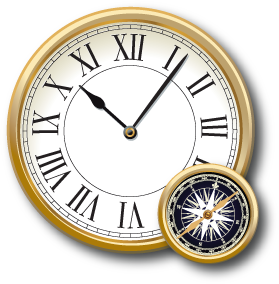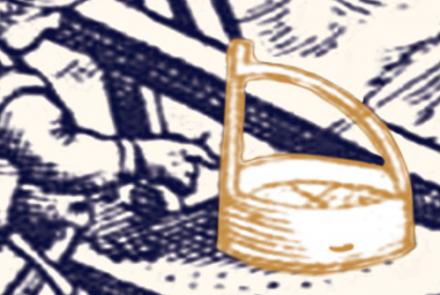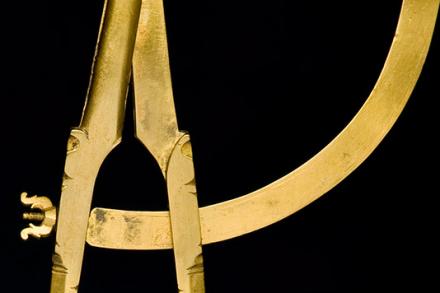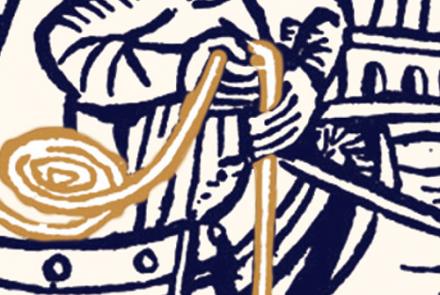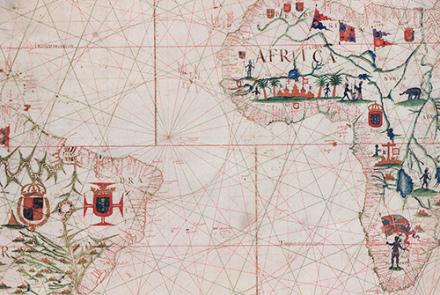Dead Reckoning
Innovations
This illustration is the frontispiece to The Mariner’s Mirrour, one of the most famous collections of sea charts from the 16th century. First printed in Holland, it was translated into English and published in 1588. English sailors used it for about 100 years. The illustration shows many of the instruments used by early navigators.
Using a compass, depicted by Flemish artist Jan van der Straet, 1523-1605.
Navigational dividers measure the distance between two points on a chart to mark the ship’s position. These are German, probably from the 18th century.
A lead line could measure water depth and bring up a sample of the bottom. From Olaus Magnus, History of the Nordic Peoples, 1555.
Sandglasses of different sizes and durations could measure intervals of time for ship speed and periods of duty. From Thomas Blanckley, A Naval Expositor, 1750.
This chart showing Nova Scotia to Cape Cod, based on Samuel de Champlain’s observations, was published in 1607. Charts are navigation aids that show shorelines and ocean features to help mariners plot their routes. Europe’s first sea charts were simple outlines of coastlines made to supplement written or oral directions. They later evolved into more accurate navigation aids based on astronomy and mathematics.
This chart of the Atlantic Ocean was created in 1633. Charts are navigation aids that show shorelines and ocean features to help mariners plot their routes. Europe’s first sea charts were simple outlines of coastlines made to supplement written or oral directions. They later evolved into more accurate navigation aids based on astronomy and mathematics.
This chart, showing the coast of western Florida’s panhandle region from Pensacola to Apalachicola, was created in 1700. Charts are navigation aids that show shorelines and ocean features to help mariners plot their routes. Europe’s first sea charts were simple outlines of coastlines made to supplement written or oral directions. They later evolved into more accurate navigation aids based on astronomy and mathematics.


